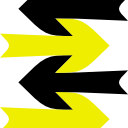
XHTML Cheat Sheet
email Scott Turner
- Prefix the whole thing with
<!DOCTYPE html PUBLIC "-//W3C//DTD XHTML 1.0 Strict//EN" "http://www.w3.org/TR/xhtml1/DTD/xhtml1-strict.dtd"> - The root element should be
html. - Use the following in the
headsection.<meta http-equiv="Content-Type" content="text/html; charset=iso-8859-1"/> <meta http-equiv="Content-Style-Type" content="text/css"/>
Also the charset should agree with what the server sends in HTTP. - If a white background is desired, use
<body style="background: white">. - In tables, define column widths using one
<col width="...">for each. This precedes the first<tr>. - To indicate alignment, use
style="text-align:...;vertical-align:...". - All tags must obey XML rules for nesting and end-tags. For
example, use
<br/>. <br/>must occur within adiv,p, etc.- All images need an
alt=text alternative. - To avoid a border on clickable images, add
style="border-width: 0"to the<img>tag. - To set text color, the style value is e.g.
color: green. - Tables accept the good old
border="1"attribute. - A table will be aligned as a block, unless you give it a style
display: inline. - Since
<p>elements can't contain other structuring constructs such as<blockquote>, it may be good to avoid them in pages that organize free-flowing chunks of information. An alternative approach is to put everything in<div>s and use double<br>s when there's a need to put a paragraph-like gap between chunks of text. - Test at the W3C MarkUp Validation Service. WDG also has a validator
- Zvon's XHTML 1.0 reference is excellent.
- Zvon's CSS1 reference is good when you're looking for a style attribute.
- CSS2 supports the vertical-style attribute on cells of a table.
- A <ul> element can have a
style="margin-top:0em;margin-bottom:0em", which will cause it not to be separated from what precedes/follows it. - To make a local change to text style, use
<span>.